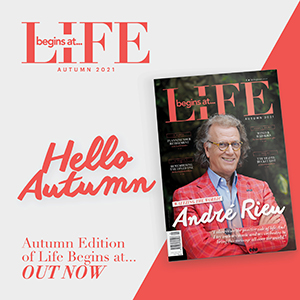Sunday morning in Bratislava, the capital of Slovakia and for those intrepid early risers taking a dawn stroll along the banks of the river Danube, there is company to be had: groups of young men are shuffling, somewhat unsteadily, back to their hotels after a hard night’s partying. Ian Jarrett explores the Post-Communist generation in the former Eastern Bloc state.

This is Party Central where stag and hen parties fly in on Europe’s budget airlines for whacky weekends.
The peeling bells of St Martin’s Cathedral – for centuries the coronation church of the kings of Hungary – do nothing to ease the hangovers of the all-night revellers.
An old lady and her dog stand at the entrance to the cathedral, begging worshippers for a few coins. A man plays an accordion, and he, too, hopes to pocket a few coins from the tour groups starting to arrive in the old part of the city.
Along the river bank, luxury river cruise ships like the Crystal Mozart are moored, and soon their passengers are disembarking for excursions to the 17th century Hrad fortress, high above the city, an impressive pile which houses the Slovakian National Gallery and a sprinkling of works by Caravaggio, Rodin and Picasso.
Hard to believe that for centuries this country was little more than a battlefield for the greedy ambitions of Hungary, Austria and the Turkish Empire. Bratislava was often the place where most blood was spilled.
As the bells of St Martin’s grow silent around midday, a change comes over Bratislava. It settles into a more sedate rhythm, as Sunday strollers take the chance to enjoy the last of the summer sunshine in Hviezdoslav Square.

The Old City Hall and the neighbouring Apponyl House are both worth a visit, the latter for its focus on Bratislava’s wine–producing traditions. Also here is the neo-classical Primate’s Palace, and its Hall of Mirrors. Where paintings and tapestries reflect a more lavish era of local history.
Also worth checking out are the sites where legendary composers like Beethoven, Mozart and Liszt stayed when they visited Bratislava.
In front of the rather grand Carlton Hotel, children are entertained at tables set up with colouring books; a singer performs for a small, seated crowd with popular melodies; an old man feeds pigeons; only the heavily protected United States embassy looks out of place in this picture of a city at peace with itself.
Cafes line one side of the street, shaded by trees. Waiters skip between tables on the cobbled street. A young girl delivers coffee with pastries and a sweet smile. A distinctive feature of Slovakian cuisine is smoked cheese, often served deep fried with ham and tartare sauce. Another menu favourite is ravioli-like pirohy, a meaty dish served with melted butter and best accompanied by glass of Czech pils.
I try the national dish by pointing to an image on the menu as I have little idea of how to pronounce bryndzove halusky. I’m served small dumplings made from potato flour that resemble Italian gnocchi. Mixed with cheese and crispy, crumbled bacon there are tasty but probably not a good choice for those counting the carbs.
Slovakia has access to good wines, mainly Riesling and Sylvaner produced in the foothills of the Lower Carpathians, but it’s best to pass on the local firewater, borovicka which, a waiter tells me, tastes like gin. I take his word for it and stick with the pils.
A succession of elegantly dressed ladies strolling through the square are a reminder of grander times in Bratislava, times when this city was the Hapsburg capital of Hungary (and was known by its German name of Pressburg). Its defining character emerged with the construction of beautiful baroque and rococo buildings. Bratislava prospered for almost 250 years before Napoleon’s conquest of Austria shook up the political landscape in the region.
Bratislava lost its capital city status and was relegated to a provincial also-ran before it was transferred in1918 to the new state of Czechoslovakia. Years later, in 1993, following the fall of the Iron Curtain, Bratislava became the capital of the newly created state of Slovakia.
The city’s Jewish Quarter – or what remains of it – is a chilling reminder of one of the darkest periods of Slovakia’s history. In1930 more 15,000 Jews lived in Bratislava, making up some 12 percent of the population. The Jewish Museum gives an idea of how this part of town once looked.
The Jews of Bratislava were subjected to discriminatory practices and persecution. By March 1942, nearly half of the city’s Jews had been evicted, and dispersed in smaller towns across the country. Many were deported to death camps in Poland.
A Holocaust Monument, close to St Martin’s Cathedral, recalls the fate of 60,000 Jews who perished in concentration camps.
Bratislava is known for its glasswork and art, and workshops around the city are filled with unique pieces from local artisans. Locals recommend the Obchodna ulica area of the city centre that features mainly inexpensive shopping and one-of-a-kind items not seen in the main shopping streets.
Many still regard Bratislava as a Cinderella city among Central Europe’s grand capitals, squeezed as it between its tourist-trampled neighbours along the Danube – Vienna and Budapest. Yet is has plenty to offer those seeking cultural glimpses without the crowds.
Like the Danube itself, the city’s fortunes have ebbed and flowed, but its future looks more settled today than any time in its history.






















Add Comment